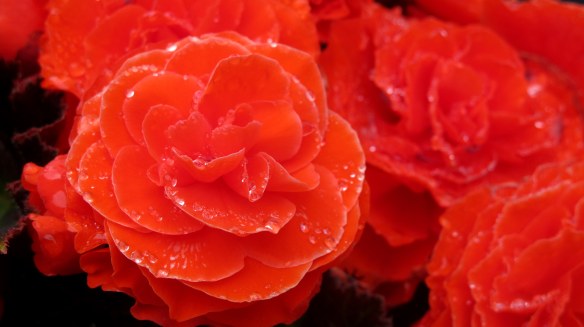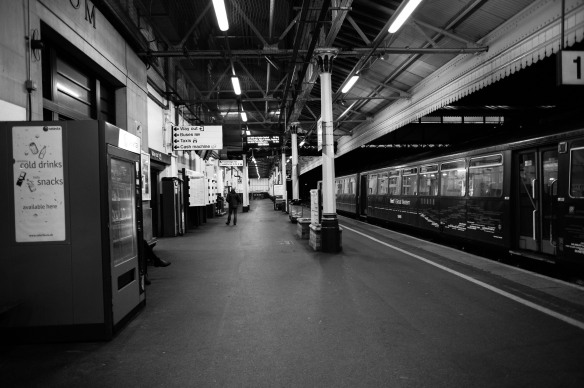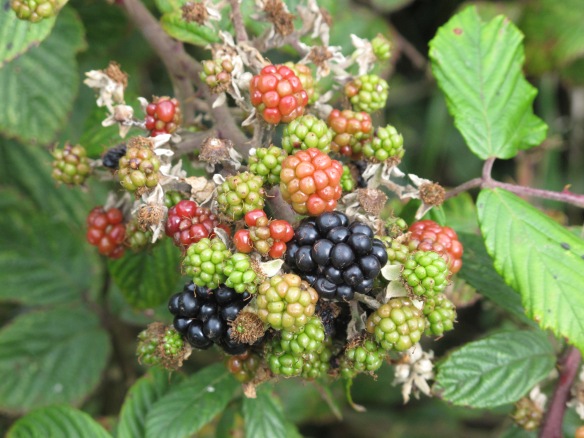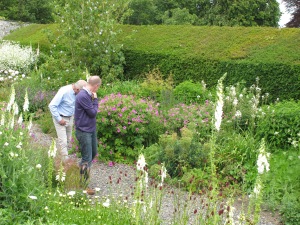The world’s falling apart around us, my friends, but we can panic later. In the meantime, this is Britain, so let’s have a nice cup of tea.
Or, since it’s hard to boil water online, let’s talk about tea instead.
China has been growing and drinking tea since the third millennium B.C.E., or so legend has it, although it can only be documented from the third century B.C.E. Which isn’t bad. That’s an entire nation that’s known how to stay awake for well over two thousand years.
And with that quick nod to the larger picture, we’ll leave them not sleeping while we hop continents and a pocketful of centuries, because what we’re talking about is how Britain became a tea-drinking nation.
The British weren’t the first Europeans to latch onto the drink. That was the Portuguese. Traders and missionaries who sipped it in “the East,” as one of Lord Google’s minions puts it, and brought some home as souvenirs.
“The East” is kind of a big area, but we’ll just nod cynically and move on.
It was the Dutch who first made a business out of importing the stuff to Europe. That was in 1606, when they were trading out of Java, the port that gave coffee its nickname. By the time tea made it’s wind-powered way to Europe, it cost a small fortune, so drinking it was a way for the upperest of the upper crust in first Holland and then western Europe in general to show off their couth, not to mention their money.
You ever notice how much more specific our information is about, say, Europe, than about that vast, undifferentiated East?
But we were talking about tea. And England. Or Britain, since we’re in that murky period when England and Scotland had the same king but not the same government and Wales had the same king and government but didn’t want either or them because it was less than delighted about having been conquered. As people tend to be.
To keep things relatively simple, we’ll keep our eye on England, which wasn’t about to be seduced by this effete continental brew. England was a nation of beer drinkers, thanks, except for people with money, who weren’t opposed to wine and might drink a bit of tea now and then for medicinal purposes, since it invigorated the body and kept the spleen free of obstructions.
Obstructions? That’s when the spleen’s on its way to an important meeting and some damn county department’s closed the road just because it’s washed out or something silly. The spleen isn’t the most easy-going of organs. You know the word splenetic? Bad-tempered, cranky, ill-humored, and other synonyms. So, a nice cup of tea and the road is magically open before it.
No, I don’t understand it either, but medicine, like spelling, was more imaginative back then.
According to a website about tea, tea, and nothing but tea, “The first dated reference to tea [in Britain] is from an advert in a London newspaper, Mercurius Politicus, from September 1658. It announced that ‘China Drink, called by the Chinese, Tcha, by other Nations Tay alias Tee’ was on sale at a coffee house in Sweeting’s Rents in the City. The first coffee house had been established in London in 1652, and the terms of this advert suggest that tea was still somewhat unfamiliar to most readers, so it is fair to assume that the drink was still something of a curiosity.”
It wasn’t until Charles II married the Portuguese princess Catherine of Braganza in 1662 that the English took tea drinking to their hearts. Or more accurately, to their thin, aristocratic lips. Catherine loved her tea, and legend has it that since she was coming to a land of barbarians she brought a hefty supply of tea leaves in her very substantial baggage.
With Catherine drinking the stuff, tea suddenly looked less like medicine and more like a status symbol–a term that, however well it was understood, hadn’t been invented yet.
Tea was still expensive. A pound cost roughly what a “working class citizen” made in a year. What kind of working class citizen, since men’s and women’s pay differed dramatically? (Ah, the bad old days. Aren’t you glad we’re past all that?) Put your money on the male variety of citizen and you’re less likely to lose it. The female variety are generally referred to as “women,” not “citizens.” Or if the citizenship bit is important, their sex will be specified.
Odd, isn’t it?
As tea drinking spread among aristocratic women, so did tea paraphernalia. Tea drinkers needed imported porcelain teapots. And the thinnest of thin cups. And dainty dishes for sugar. They may not have actually liked tea, but they sure as hell knew how to make a ritual of it.
All those peripherals were imported by the Portuguese as well.
It was at this period–in other words, right from the start–that they began adding milk to their tea. The cups were so delicate that they cracked if the tea went in without something to cool it.
Starting in 1664, the East India Company–a British creation–moved in on the trade and imported tea into England, and from aristocratic ladies, tea made its way down the social scale into the coffee houses, where middle- and upper-class men did business, and into the homes of middle- and upper-class women, who didn’t get out the way the men did.
Tea was still too expensive for the working class. The East India company got itself a monopoly on British imports and kept the price high. And tea was taxed heavily, which means that by the eighteenth century it worth smuggling. By the end of the eighteenth century, organized crime networks had gotten involved. Smugglers brought in seven million pounds of the stuff. How does anyone know, since they’d have been wise to keep it out of sight and uncounted? Good question. But legal tea? Only five million pounds came into the country.
Tea–especially the smuggled stuff–was often mixed with leaves that had been brewed once and then dried. Or with leaves from other plants. To make the color more convincing, some clever devil hit on the idea of adding sheep manure. Or so say the articles I read. People kept drinking it, so it couldn’t have been too off-putting.
In 1784, the government reduced the import tax and tea smuggling pretty well ended.
As the price came down, tea became a “common luxury” for working class people, and by the 1830s had become a “necessary luxury.” As the temperance movement grew it became a substitute for alcohol.
The working class diet at this point was made up mostly of bread, potatoes, and tea.
Why would class people buy something that didn’t fill their bellies and had no nutritional value when money was scarce and food wasn’t plentiful? Hot tea with sugar offered energy, a brief break from work, and the illusion that you’d had a hot meal.
In the 1820s, the East India Company began growing tea in India, and in the 1860s it began to be grown in Sri Lanka, which was Ceylon at the time even though it occupied the same spot on the globe as it does now, under the new name. The price dropped.
Predictably enough, as soon as the working class started drinking serious amounts of tea, the overseers of public morality went into a panic about how it would affect them. Excessive tea drinking, they warned, would cause weakness and melancholy. But only in working-class people. Not among their, ahem, betters.
Then the public moralizers realized that if working people drank tea they’d have less time and money to drink beer, so they settled down and accepted the situation.
Tea became so much a part of British life that in the first and second world wars the government took control of importing it to ensure that it stayed both available and affordable. They were afraid morale would collapse without it.
And today? Britain sips its way through 60 billion cups of tea per year. That’s 900 cups per person, but that includes people who’ve just been born, so the rest of us have to drink their share. And sixteen- to thirty-four-year-olds aren’t drinking their share either, possibly because they’re afraid it’ll stain their teeth but possibly because tea doesn’t make a statement.
A statement?
The article that enlightened me about this quoted food futurologist Morgaine Gaye, who said, “A cup of English breakfast or builder’s tea is only cool when you are slumming it. You might have a cup of tea at your mum’s, but not when you are out or in a cafe because it doesn’t say anything.”
Slumming it at your mother’s? I’m going to tell her mother she said that and–I can predict this much of the food future–she won’t be eating there this holiday season. Or if she does, she’ll be drinking lukewarm water from the dog’s bowl.
Anyway, this defection by the irresponsible young means their brown-toothed elders–those of us who don’t want anything that lives inside our cups to make statements to the world at large or even whisper to us personally–have to drink even more.
And to make ourselves feel okay with that, we’ve started asking if it doesn’t, oh please, have some medicinal effects. In other words, since we’re drinking it anyway, doesn’t it cure something?
The definitive answer is, maybe. The evidence disagrees with itself. Pitch your tent with the people who say it does and you may be wrong but you’ll feel better about it all.
Kate Fox, an anthropologist and the author of the inspired Watching the English, reports that the higher up the class structure you go, the weaker the tea. Which is why I’ve decided not to hang out with the queen anymore. I like a nice, strong brew and furthermore I like to drink it with people who aren’t afraid to swear, or who at least (a) understand the words and (b) don’t pass out when I do.
Fox also says, “Tea-making is the perfect displacement activity: whenever the English feel awkward or uncomfortable in a social situation (that is, almost all the time), they make tea.” Which may be why so much of it gets made.
And once you’ve brewed it, it’d be wasteful not to drink it. And since the young aren’t doing their share, it’s up to those of us who are over 34.
*
After Christmas, we’ll finally get around to the connection between tea and the opium trade.













